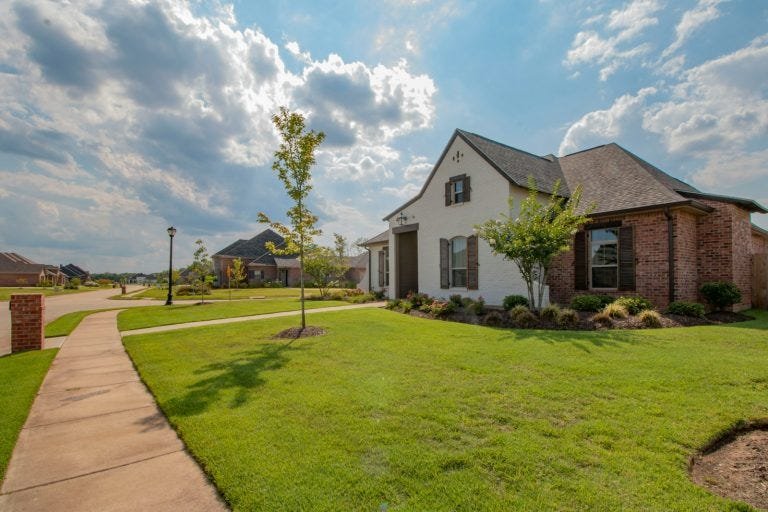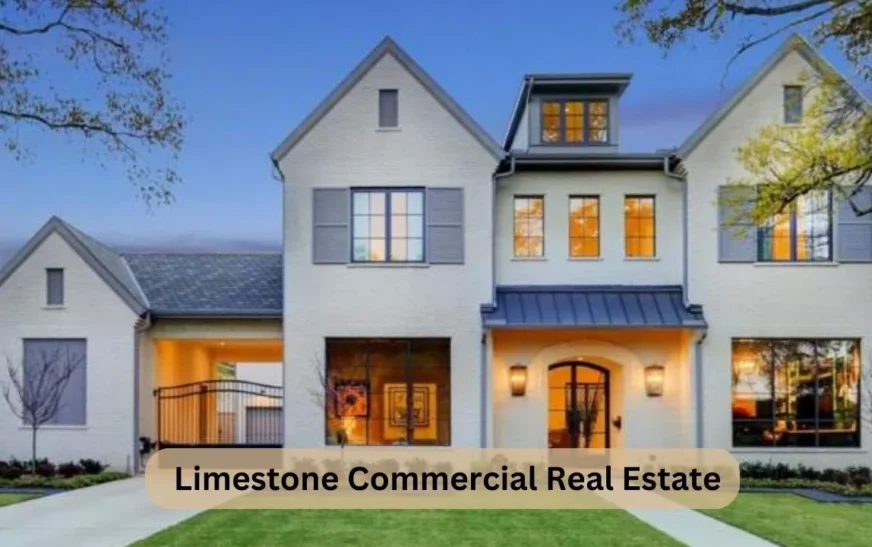In the world of real estate, limestone commercial real estate properties are becoming a smart choice. Limestone, a strong natural stone, is used to build offices, hotels, and shops. It lasts long and looks beautiful, making it great for business places.
What Makes Limestone Commercial Real Estate Special
Limestone is not just a stone; it’s a choice for smart investors in buildings for businesses. It’s strong and lasts a long time, making it perfect for offices and shops. The natural beauty of limestone also makes it attractive to people who visit and work there. When you choose limestone, you’re choosing a building that stands out and lasts.
Benefits of Choosing Limestone for Your Business Property
Choosing limestone for your business property has many benefits. It’s strong, which means it doesn’t need a lot of repairs. This saves you money in the long run. Limestone also looks good. It gives your property a special look that people notice. This can help attract customers to your business. Another benefit is energy efficiency. Limestone helps keep your building cool in summer and warm in winter, which saves energy and money on bills.
Why Invest in Limestone Commercial Real Estate Today
Investing in limestone commercial real estate today is a smart move. The demand for eco-friendly and durable buildings is growing. Limestone meets these needs perfectly. It’s a natural material that lasts for years without needing much maintenance. This makes it a good investment because it saves you money over time. Plus, buildings made of limestone are attractive to tenants and buyers, which can increase the value of your property.
How Limestone Helps Save Energy in Buildings
Limestone is great at saving energy in buildings. Its natural properties help keep the inside of buildings cool in hot weather and warm in cold weather. This means less money spent on heating and cooling bills. Using limestone in your building can also earn you points towards green certifications, which show that your building is eco-friendly. This can attract more tenants who care about the environment.
Examples of Successful Limestone Commercial Properties
There are many examples of successful limestone commercial properties around the world. For example, in cities like New York and Chicago, historic buildings made of limestone are still standing strong. These buildings not only look beautiful but also hold their value over time. Investors who choose limestone for their commercial properties often find that they have made a wise investment because of the durability and attractiveness of the buildings.

Tips for Buying Limestone Commercial Real Estate
When buying limestone commercial real estate, it’s important to consider a few things. First, think about the location. A good location can make your property more valuable. Next, consider the condition of the building. Make sure it’s in good shape and doesn’t need a lot of repairs. Also, think about your budget. How much can you afford to spend on the property and any renovations it might need? Lastly, consider the future. Is the area growing? Will your property increase in value over time?
The Future Outlook for Limestone Commercial Real Estate
The future looks bright for limestone commercial real estate. As more people become aware of the benefits of using natural materials like limestone, the demand for these properties is likely to increase. This means that investing in limestone now could be a smart decision for the future. Buildings made of limestone are not only durable and energy-efficient but also attractive to tenants and buyers who value sustainability.
Cost Efficiency of Limestone Buildings Over Time
While the initial cost of using limestone in buildings may be higher than some other materials, it’s important to consider the long-term savings. Limestone buildings require less maintenance and repair compared to buildings made of less durable materials. This means lower costs over the life of the building. Additionally, energy savings due to limestone’s thermal properties can further reduce operating expenses. Over time, these cost efficiencies can make limestone buildings a more economical choice for commercial real estate investments.
Environmental Benefits of Limestone in Commercial Construction
Using limestone in commercial construction offers significant environmental benefits. Limestone is a natural resource that is abundant and sustainable when managed responsibly. Its production and use typically have a lower environmental impact compared to synthetic building materials. Limestone buildings can also contribute to energy efficiency and indoor air quality, supporting healthier and more sustainable built environments. By choosing limestone, developers and investors can align their projects with green building standards and contribute positively to environmental stewardship.

How to Finance Your Limestone Commercial Property Investment
Financing a limestone commercial property investment requires careful planning and consideration. Start by assessing your financial situation and determining how much capital you have available for the investment. Explore traditional financing options such as bank loans or commercial mortgages, ensuring you understand the terms and interest rates involved. Additionally, consider alternative financing methods like Real Estate Investment Trusts (REITs) or partnerships with other investors to spread risk and leverage collective resources. Whichever financing route you choose, ensure it aligns with your investment goals and long-term financial strategy.
Cost Efficiency of Buildings Over Time
Investing in buildings made from durable materials like limestone can prove to be cost-effective in the long run. While the initial investment may be higher compared to other building materials, such as concrete or brick, limestone’s longevity and low maintenance requirements offer substantial savings over time. Due to its natural resistance to weathering and aging, limestone buildings require fewer repairs and replacements. This not only reduces ongoing maintenance costs but also minimizes disruptions to business operations. Additionally, the thermal properties of limestone contribute to energy efficiency by helping to regulate indoor temperatures naturally. This can lead to lower heating and cooling expenses, further enhancing the overall cost efficiency of the building.
Environmental Benefits of Sustainable Construction
Opting for sustainable construction practices, including the use of materials like limestone, can have significant environmental benefits. Limestone is a natural resource that is abundant and widely available, making it a sustainable choice for building projects. When sourced responsibly, limestone extraction and processing can have minimal environmental impact compared to synthetic building materials. Additionally, limestone buildings often contribute to improved indoor air quality by minimizing the use of volatile organic compounds (VOCs) and other harmful chemicals commonly found in conventional building materials. By incorporating sustainable design principles and materials like limestone, developers can reduce the ecological footprint of their projects and contribute positively to environmental conservation efforts.
Energy Efficiency in Building Design
Energy efficiency is a crucial consideration in modern building design, and materials like limestone play a key role in achieving sustainable energy goals. Limestone’s thermal properties help regulate indoor temperatures by absorbing and releasing heat slowly, which reduces the need for artificial heating and cooling systems. This natural insulation can lead to significant energy savings and lower utility costs over time. Furthermore, the reflective qualities of light-colored limestone can mitigate the urban heat island effect in densely populated areas by reducing solar heat absorption. By incorporating energy-efficient building materials and technologies, developers can create healthier and more comfortable indoor environments while reducing greenhouse gas emissions and promoting long-term sustainability.
Investment Strategies for Commercial Properties
Investing in commercial properties requires careful consideration of various factors to maximize returns and mitigate risks. One effective strategy is diversifying your investment portfolio by allocating funds to different types of properties, such as office buildings, retail spaces, and warehouses. This approach helps spread risk and capture opportunities in diverse market segments. Another strategy is to conduct thorough market research and analysis to identify emerging trends and investment opportunities in specific geographic regions or industry sectors. Additionally, partnering with experienced real estate professionals or joining Real Estate Investment Trusts (REITs) can provide access to expertise and resources that enhance investment decision-making and portfolio management. By adopting a strategic approach to commercial property investment, investors can optimize returns and build a resilient real estate portfolio that withstands market fluctuations.
Trends in Sustainable Real Estate Development
The shift towards sustainable real estate development is driven by growing awareness of environmental issues and regulatory requirements. Developers and investors are increasingly prioritizing green building practices and certifications, such as LEED (Leadership in Energy and Environmental Design), to enhance the value and marketability of their properties. Sustainable features, such as energy-efficient HVAC systems, solar panels, and water-saving technologies, are becoming standard in new construction and renovation projects. Additionally, sustainable building materials like recycled concrete, bamboo flooring, and, of course, limestone are gaining popularity for their durability, aesthetic appeal, and environmental benefits. By incorporating sustainable design principles and technologies into real estate projects, developers can meet the demands of environmentally-conscious tenants and investors while contributing positively to the global effort to combat climate change.
Advantages of Natural Building Materials
Natural building materials, such as limestone, offer numerous advantages over synthetic alternatives. One of the primary benefits is sustainability. Limestone is a natural resource that is abundant and renewable when managed responsibly. Its extraction and processing typically have lower environmental impacts compared to the production of synthetic materials like concrete or steel. Additionally, natural materials like limestone tend to have lower embodied energy, meaning less energy is required for their production and transportation. This contributes to reduced greenhouse gas emissions and supports efforts to create more sustainable built environments.

The Role of Architecture in Commercial Real Estate
Architecture plays a crucial role in the success and functionality of commercial real estate properties. Beyond aesthetics, architectural design influences factors such as space utilization, energy efficiency, and tenant satisfaction. When designing commercial buildings with materials like limestone, architects have the opportunity to create spaces that are not only visually appealing but also conducive to productivity and well-being. Sustainable architectural practices, such as passive solar design and natural ventilation, can further enhance the environmental performance and operational efficiency of commercial properties. By integrating innovative architectural solutions and sustainable building materials, developers can create spaces that meet the evolving needs of tenants and enhance the overall value of their real estate investments.
Sustainable Development and Urban Planning
Sustainable development and urban planning are essential considerations in shaping the future of cities and communities. The adoption of sustainable building practices, including the use of materials like limestone, can contribute to more resilient and livable urban environments. Limestone buildings offer benefits such as improved energy efficiency, reduced environmental impact, and enhanced aesthetic appeal. In urban planning, incorporating green spaces, pedestrian-friendly designs, and sustainable transportation options can further promote sustainability and quality of life for residents and businesses alike. By embracing sustainable development principles and leveraging natural building materials, urban planners can create cities that are healthier, more efficient, and more enjoyable to live and work in.
Conclusion
In conclusion, limestone is not just a rock but a super cool material for building big buildings and nice places to work and shop. It helps keep buildings strong and looking good for a long time, which saves money on fixing things all the time. Limestone also helps save energy by keeping buildings warm in winter and cool in summer, which is good for the planet.
Investing in limestone buildings can be a smart idea because they’re not just strong and pretty but also good for saving money and helping the environment. So, next time you see a big building made of limestone, remember it’s not just a rock — it’s a smart choice for a better, greener future!










